What is PIM?
PIM is an abbreviation for "Product Information Management", and a PIM system is the focal point for collecting, enriching and publishing product data. A PIM system is thus a central system for those who work purposefully with ecommerce and online sales.
A PIM system's most important task is to ensure the company's ability to handle large amounts of complex product data. The good PIM solution makes it easy to publish this information efficiently to relevant channels (e.g. to suppliers, social media, webshops or the like).
With a PIM system, you get a single source of truth for your product data, so that your employees never have to spend valuable time accessing a resource that should be available to everyone.
In other words, Product Information Management is a tool for taking control of all your product data and the processes associated with enriching, using and distributing it.
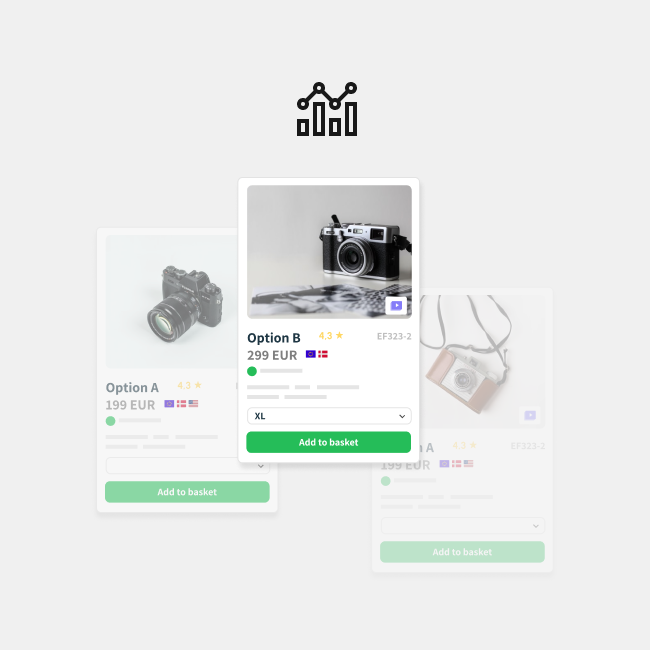
Why is PIM important?
80% of all consumers do online research before buying - is your product data good enough?
When we shop online, we often buy products that we have never seen or had in our hands before. We therefore buy the products based on the product data we are presented with. This makes product data - information about the product's shape, weight, size, color, etc. - critical to e-commerce success.
It's estimated that 80% of all users (B2C and B2B) conduct online research before making a purchase. If you exhibit incomplete product data in your catalogues, on your webshop or website, you therefore risk losing customers to the competitor.
If we combine this with our knowledge of how quickly new technologies, channels and markets are emerging, the importance of having a robust system for handling product data becomes very high.",
What is "good product data"?
Good product data is the data that helps your customers make an informed purchase decision.
A PIM system gathers all your product data in one system, which makes the work of collecting, enriching and distributing product data across channels much easier. Today, product data is more than just "title and price". Typically, the customer needs far more data such as:
- Media (images, technical drawings and videos)
- Manuals and instructions
- Technical specifications
- Descriptions and sales texts
- Channel hierarchies (for example: e-com, directories, apps, etc.)
- SEO Data
Add to this the need for additional language layers, integrations to ERP systems and a large supplier and dealer network, and the need for razor-sharp control of product data is essential to succeed with a digital strategy.
The PIM system ensures that your product data is always up-to-date, which benefits your customers

PIM focuses on effective processes in working with product data
Do you come from an everyday life where product data has been scattered across systems, departments and areas of responsibility? Then with PIM, you will be able to centralize and streamline your workflows, and save time while reducing errors.
The larger and more complex your data volume, the greater the gain from implementing PIM. We typically see the following benefits from the introduction of PIM:
- Better overview of all product processes from "cradle" to "grave"
- Better overview of errors and omissions in product data
- Reports notifying data controllers of errors and omissions
- Time-to-market is reduced through efficient data processes
- Fewer errors in product data means smooth launches
- Higher trust in your brand as a result of accurate data
- Overview of omnichannel (\"what data is used in which channels?\")
- Resources are freed up for integrations (ERP, Amazon etc.)"
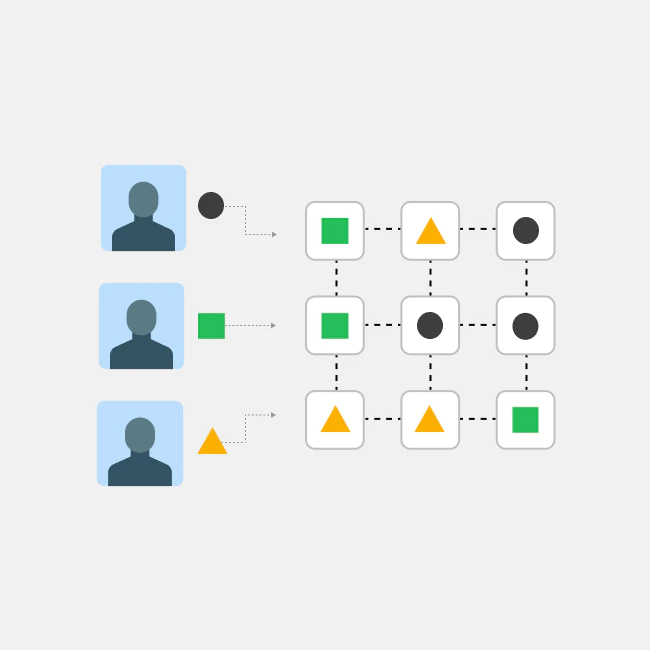
Which processes are typical in working with PIM?
All PIM implementations are as different as the companies in which the PIM solutions are implemented. Some companies have data in many systems, others only in ERP. This means that many different considerations must be taken into account in the work with process optimization.
Examples of product processes that can be managed in a PIM system could be:
- The process of creating/enriching products
- Managing the translation process
- Auto-generating SEO data
- Processes for handling images (from ordering to publishing, e.g. image bank)
- Authentication of product data (in an omnichannel setup)
- Publishing PIM data in channels (e.g. Web, E-Commerce, catalogs, apps, etc.)
- Management of campaign processes (e.g. flyers, banner advertisements, in-store TV, etc.)
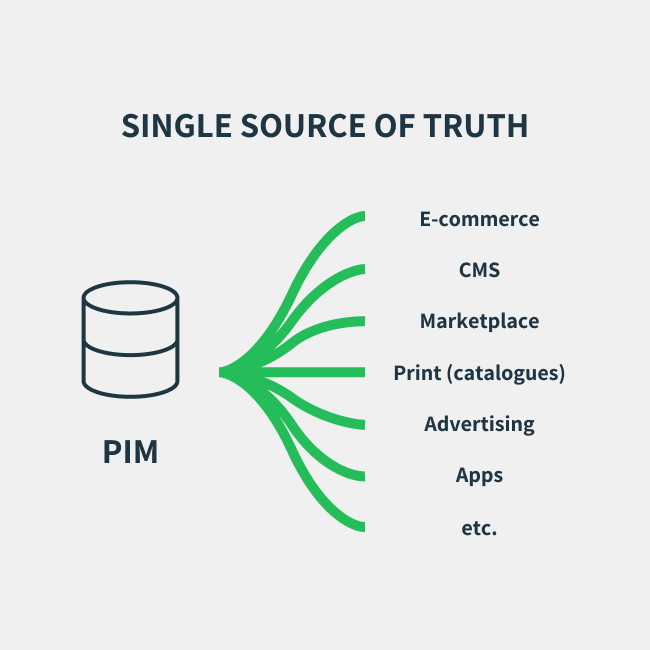
PIM as "Single Source of Truth" - collect your product data
PIM is often referred to as being the "single source of truth" for product data. This means that the PIM system is ideally made the only place where product data is stored and distributed from.
This eliminates the risk of errors in data and of slow processes where product data is stored locally on different computers and in different systems.
As the volume and complexity of the company's product information increases, so will the value of implementing a PIM system.
Since it can be difficult to eliminate the need for an ERP system completely, you can create an ERP integration that lifts key tasks in the enrichment process.
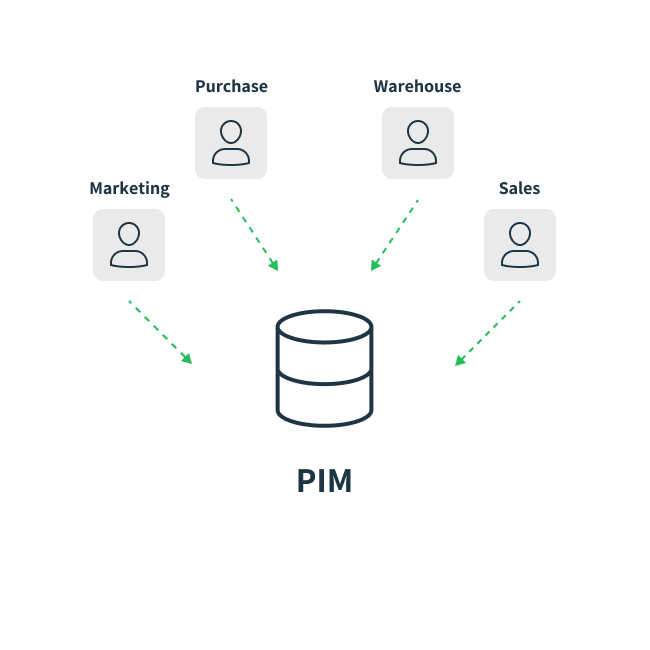
Give your employees and colleagues quick and easy access to product data
The opportunity to strengthen your marketing and sales body and to get a coherent presentation of products and a strengthened brand is a clear benefit of implementing PIM.
In the PIM system, the responsibility for enrichment and distribution of product data can be assigned to specific people. In this way, you avoid confusion and errors in working with product data, which in the worst case results in your customers being met with incorrect data.
From the PIM system, data is easily distributed to all your channels such as webshop, website, marketplaces (Amazon, Elgiganten) and other endpoints.
Curious as to whether PIM is for you?
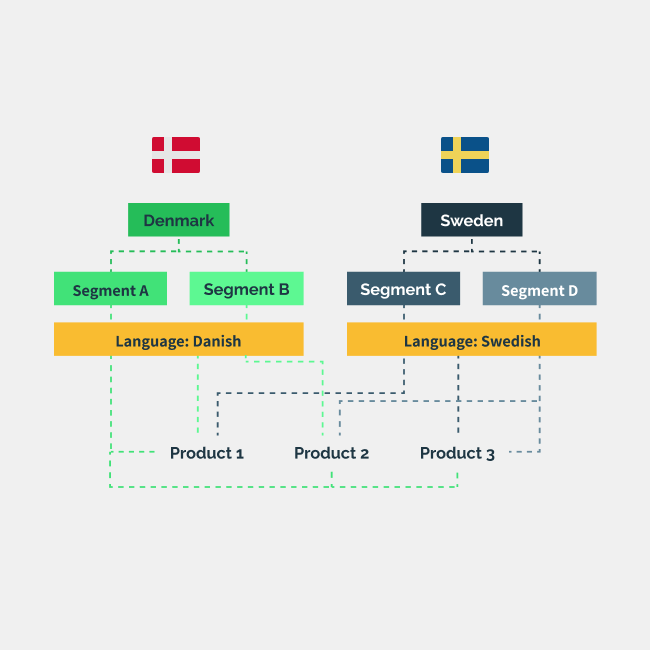
Segment your products
There can be various reasons for segmenting a product database such as customer type: B2C, B2B or public customers. Most often, however, we see that products are segmented by geographic markets.
Multiple nationalities give rise to language-differentiated product and market data. A PIM system optimizes companies' language processes by:
- Creating an overview of which products need translation
- Supporting automated translation
- Autogenerating data feed with "source" and "target" languages
- Enabling reuse of across all channels
- Reducing the cost/time spent on
- Translating and standardizing terms once and for all
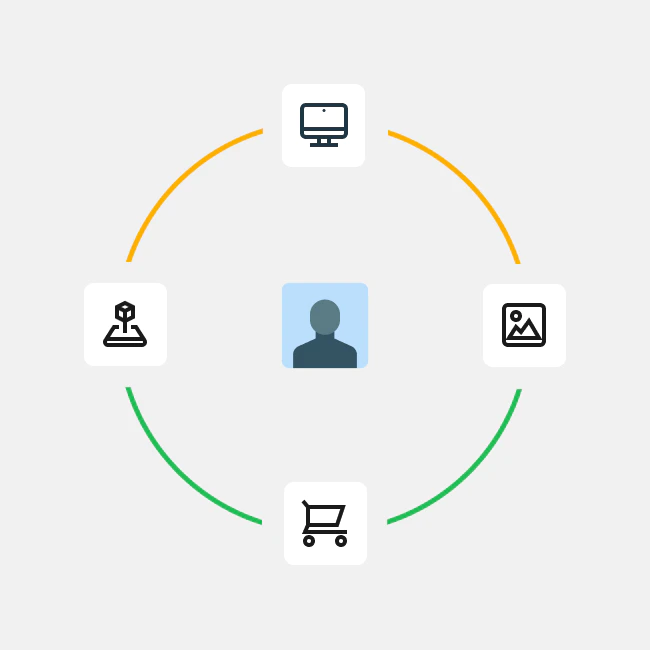
PIM is the shortcut to an Omni channel strategy
Product Information Management makes the realization of any omni-channel strategy possible by sending targeted channel data to the company's many channels/touchpoints. Here's how a PIM system supports your omni-strategy:
- Overview of all channels
- Overview of products in channels
- Centralization of channel data (data used in the individual channel)
- Distribution of targeted channel data
- Dynamic Maintenance of Channel Data
- Overview of channel data processes
- Central management and management of channel data. (Through rights management in PIM, the company ensures that it is the right employees who maintain the company's data)

Standard PIM provides standard ERP
The data foundation of a company is typically ERP, CRM and PIM. In ERP, transactional data is centralized. Transaction data is the data that the company uses to run all the internal processes (from quotation to delivery). In PIM, all the data that the company needs to use to sell the product (technical specifications, descriptions, images, drawings, etc.) is centralized. PIM thus "cleans" the ERP of product customizations, which ensures that the ERP platform gets closer to standard.
Our experience tells us that this setup offers the following advantages:
- A big reduction in ERP upgrade costs
- Minimizing costs when migrating from ERP X to ERP Y
- Major reduction in product maintenance costs
- Great flexibility and fast TTM when new data requirements arise
- Fewer integrations between ERP and other systems
- Perfect platform for company acquisitions where ERP systems and product ranges need to be combined
More about PIM for the diligent reader
If you don't get your curiosity answered here, please feel free to contact us!



